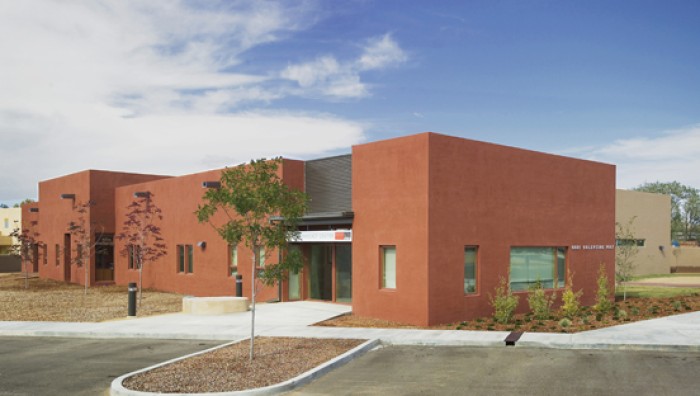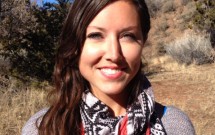
Chris Chappell shares the intimate details of his clinical work at Solace Crisis Treatment Center…
 I am working 32 hours a week as a bilingual clinician at Solace Crisis Treatment Center in Santa Fe. I am for the most part loving the work. I am now seeing up to 11 clients and I do one or two triage assessments (intake for potential new clients) each week. There are also three team meetings a week, and, paperwork and computer billing to fill out. I have two male clients and the rest are female, aged 16 to mid 60’s. Most of our clients are culturally either anglos, Spanish New Mexicans (descended from those who settled here hundreds of years ago), or recent immigrants from the state of Chihuahua in Mexico, a reflection of the dominant cultural groups of Santa Fe. And, I have also triaged or treated Native Americans of various tribes, Japanese, Guatemalan, and Costa Rican. Five are English-only speakers (4 anglo and 1 Native American), two are Spanish-only speakers, and four speak Spanish as a first language and varying degrees of English. I work mostly in Spanish with the latter group, a great antidote to perfectionism as I have to just stumble along with my Spanish as it is evolving. My clients seem to appreciate the Spanish even though it is so far from fluent or perfect, and I understand most of what I need to understand from them, and, if I don’t, I ask them to slow down and repeat it. And, as the weeks go by, I get a little better all the time with the Spanish, just as I encourage my clients to take baby steps toward their goals.
I am working 32 hours a week as a bilingual clinician at Solace Crisis Treatment Center in Santa Fe. I am for the most part loving the work. I am now seeing up to 11 clients and I do one or two triage assessments (intake for potential new clients) each week. There are also three team meetings a week, and, paperwork and computer billing to fill out. I have two male clients and the rest are female, aged 16 to mid 60’s. Most of our clients are culturally either anglos, Spanish New Mexicans (descended from those who settled here hundreds of years ago), or recent immigrants from the state of Chihuahua in Mexico, a reflection of the dominant cultural groups of Santa Fe. And, I have also triaged or treated Native Americans of various tribes, Japanese, Guatemalan, and Costa Rican. Five are English-only speakers (4 anglo and 1 Native American), two are Spanish-only speakers, and four speak Spanish as a first language and varying degrees of English. I work mostly in Spanish with the latter group, a great antidote to perfectionism as I have to just stumble along with my Spanish as it is evolving. My clients seem to appreciate the Spanish even though it is so far from fluent or perfect, and I understand most of what I need to understand from them, and, if I don’t, I ask them to slow down and repeat it. And, as the weeks go by, I get a little better all the time with the Spanish, just as I encourage my clients to take baby steps toward their goals.
The clients who we treat are typically in some sort of crisis and we work only short term (averaging about 8-10 sessions). PTSD and anxiety are our specialties, though we do stray outside that realm a bit at times. We are well known for our thorough assessments in town, and we refer out many people who come to us for assessment to other services or agencies in the best interest of the client. We only take a client in at Solace if we believe that our short-term methods will be helpful and the client is sufficiently motivated to not only attend sessions, but do the homework that is part of how we work. And, at the moment, anyway, we do not charge clients directly for our services! Our work is grant funded by the City of Santa Fe and various other sources, plus we bill the state Dept of Health for all our work with victims of sexual assault (which is substantial given that we are part of a loose-knit nationwide network of rape crisis centers).
Our clinical department has a strong team focus and I appreciate the support and the feedback I get at this point in my development as a therapist. Though the nature of the work is radically different, the team united for a common, altruistic purpose does remind me of my work as a conservation ecologist with the Washington Natural Heritage Program that so fed my need for engagement and service for so many years in the past. My supervisor is very experienced and has no shortage of ideas for how to work with clients, and, importantly, he also seems supportive of me developing my own style and using what works for me, whether or not its what works for him. I am learning through direct practice with new methods all the time, as I am encouraged to try techniques new to me that are used by other experienced clinicians on the team.
Cognitive-behavioral therapy (CBT) is the organizing model for our methods, but in practice, we also use a lot of somatic (body-based) methodology, art therapy, and cutting edge nervous-system-focused methods (for example, brainspotting, which I am trained in and am using regularly). So, this includes EMDR, brainspotting, and trauma resiliency model, adapted from somatic experiencing, and, of course, working with thoughts, feelings, and behaviors and their relationship (the latter of which can be revolutionary for those who have not looked at life this way before). And CBT includes under its large umbrella a wide variety of relaxation and soothing techniques, including mindfulness practice. I have been teaching many of my clients some basic methods from mindfulness-based stress reduction (Jon Kabat-Zinn’s work in which I have advanced training) to help with relaxation. Even if I am not teaching a client mindfulness, I am using mindfulness (present-moment awareness with an attitude of non-judgemental acceptance) in every session. My experience with clients is confirmation of the philosophy of Southwestern College, Carl Rogers, and interpersonal neurobiology. When I am fully present, mindfully there for them, and with a loving intention, that is the essential container, or prerequisite, for their healing – the most important piece of the therapeutic puzzle regardless of what ‘methods’ are used. This I can do regardless of whether I know of a method that is just right for their current predicament, and this, my clients respond to.
Chris Chappell, MA, MS, LMHC, is a bilingual therapist at Solace Crisis Treatment Center in Santa Fe. He also has a small private practice focusing in particular on nature-based therapy. He graduated from Southwestern College’s Counseling program in 2010, and obtained a certificate in Ecotherapy. He is an experienced wilderness fast guide. He is trained to teach Mindfulness-based Stress Reduction, and also has training in Nonviolent Communication, Brainspotting, Soulcraft, and Trauma First Aide. In the first half of his life, he worked as a field biologist and conservation ecologist.
 Southwestern College Santa Fe, NM
Southwestern College Santa Fe, NM





